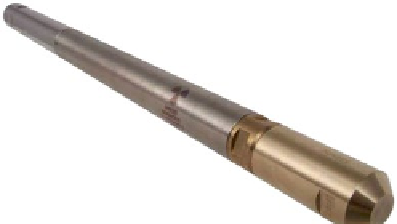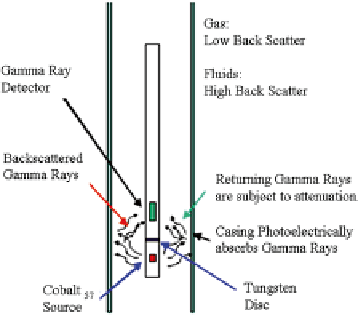Environmental Engineering Reference
In-Depth Information
Fig. 7.7
Gas holdup tool
The tool employs a Cobalt-57 source which emits γ-rays. The detector is shielded
from any γ-rays coming directly from the source by means of a tungsten disk, as
shown in Fig.
7.8
. The detector is therefore responding to back scattered γ-rays. The
intensity of the back scattered radiation is a function of the fluids surrounding the
tool. If gas is present the number of γ-rays detected is small. If liquid oil or water is
present the number of back scattered γ-rays is large.
Fig. 7.8
Gas holdup tool
schematic
Resonator (Vibrator)
Tools that measure fluid density by means of mechanical vibration have been in use
for some time. They are designed so that the flow stream is directed to pass through
a hollow metal cylinder containing radial blades in line with the fluid stream. The
cylinder is set into circular vibration by an electromagnetic driving system and
oscillates at a natural frequency that depends on the density of the fluids passing
through the cylinder. The raw reading of the tool is a frequency. Each tool has a cali-
bration chart to convert from frequency to a density index. The main problem with
tools of this sort is their tendency to plug up with sand or other grains carried in the
flow stream. Figure
7.9
illustrates a fluid density inertial tool which employs this
principle of operation.



Search WWH ::

Custom Search